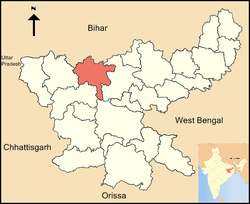Overall, water availability for irrigation in the district (based on ground water development and long-term trends of water level decline) is within the safe limit, enhancing long-term sustainability of solar pumps. The average monthly per capita expenditure of rural agricultural households is relatively low for the district, suggesting poor purchasing capacity of the farmers here. It has a relatively low penetration of banks in rural and semi-rural areas, impeding access to institutional credit for farmers. There is a comparatively high level of farm mechanization in the district, implying a positive outlook towards progressive technologies amongst the farmers. The district has a relatively high proportion of small and marginal farmers.
Deployment Approaches
| Approaches | Feasibility |
|---|---|
| Individually owned off-grid solar pumps | Limited Suitability |
| Solarisation of feeders | Limited Suitability |
| Solar based water as a service | Suitable |
| Promote 1 HP and sub-HP pumps | Limited Suitability |
| Solarisation of individual grid-connected pumps | Limited suitability |
Individually owned off-grid solar pumps
Limited Suitability
The district has ground water available within the safe limit, a comparatively high concentration of diesel pump users, and high crop revenue per holding, but has a relatively low disbursement of institutional credit. Long-term bank loans should be promoted in the district to enable the adoption of capital-intensive farm technologies, including solar pumps.
| Parameter | Value | Percentile |
|---|---|---|
| Number of cultivators reporting use of diesel pumps | 26,169 | 60 |
| Water Availability Index | 1 | 100 |
| Crop revenue per holding (INR) | 139,316 | 72 |
| Medium and long term institutional credit disbursed in a year (in INR Crore) | 112.2 | 69 |
Solarisation of feeders
Limited Suitability
The district has a relatively high penetration of electric pumps and a comparatively high extent of feeder segregation but its DISCOM incurs a relatively low cost for supplying power. As the power purchase rate of the DISCOM increases going forward, solarisation of the feeders may become economically viable in the district.
| Parameter | Value | Percentile |
|---|---|---|
| Actual cost of power supply (INR/kWh) | 5.26 | 20 |
| Extent of feeder segregation | 61% | 51 |
| Proportion of cultivators reporting use of electric pumps | 2% | 29 |
Solar based water as a service
Suitable
Availability of groundwater within the safe limit, a relatively high proportion of unirrigated area, and a rather high concentration of small and marginal farmers in the district make the water-as-a-service model a potential way to promote solar-based irrigation. The model could help in improving irrigation equity, without requiring a farmer to bear an upfront cost to purchase a pump.
| Parameter | Value | Percentile |
|---|---|---|
| Water Availability Index | 1 | 100 |
| Proportion of small and marginal cultivators | 90% | 61 |
| Unirrigated net sown area as a share of total net sown area | 82% | 73 |
Promote 1 HP and sub-HP pumps
Limited Suitability
The district has a relatively high proportion of horticulture crops under gross cropped area, high concentration of marginal farmers and groundwater availability within the safe limit, but disbursement of institutional credit to marginal farmers is comparatively low. Greater support, either through subsidies or credit, would be required to enable marginal farmers to adopt solar pumps.
| Parameter | Value | Percentile |
|---|---|---|
| Area under horticulture crops as a share of gross cropped area | 10% | 62 |
| Water Availability Index | 1 | 100 |
| Proportion of marginal cultivators | 68% | 56 |
| Medium and long term institutional credit disbursed in a year (in INR Crore) | 112.2 | 69 |
Solarisation of individual grid-connected pumps
Limited suitability
The district has a relatively high penetration of electric pumps, ground water available within the safe limits and a comparatively high extent of feeder segregation. But the relatively low power subsidy for agriculural consumers make solarisation of individual grid-connected pumps an inefficient way of enhancing solar pumps in the district.
| Parameter | Value | Percentile |
|---|---|---|
| Water Availability Index | 1 | 100 |
| Actual cost of power supply (INR/kWh) | 5.26 | 20 |
| Extent of feeder segregation | 61% | 51 |
Leveraging Solar Pumps to Promote Policy Objectives
If you are deploying solar pumps in this district then you can further these policy objectives.
Har Khet ko Pani
A relatively high proportion of the net sown area in the district is unirrigated, indicating high irrigation demand. Solar pumps can help improve access to underground irrigation as part of Har Khet ko Pani.
| Parameter | Value | Percentile |
|---|---|---|
| Unirrigated net sown area as a share of total net sown area | 82% | 73 |
Doubling Farmers’ Income – Crop Intensity
A relatively high proportion of the district’s net sown area is unirrigated. Lack of access to irrigation is one of the major barriers to growing crops beyond two conventional seasons, rabi and kharif. Ensuring irrigation access through solar power will help improve cropping intensity and move towards the aim of doubling farmers’ income by 2022.
| Parameter | Value | Percentile |
|---|---|---|
| Unirrigated net sown area as a share of total net sown area | 82% | 73 |
National Mission on Oilseeds and Oil Palm (NMOOP)
The relatively low share of oilseeds and oil palm crops under gross sown area in the district makes it a suitable candidate for promoting NMOOP. Solar pumps could meet irrigation needs for these crops and help farmers diversify their yields beyond cereals.
| Parameter | Value | Percentile |
|---|---|---|
| Area under oilseeds as a share of total cropped area | 40 |


